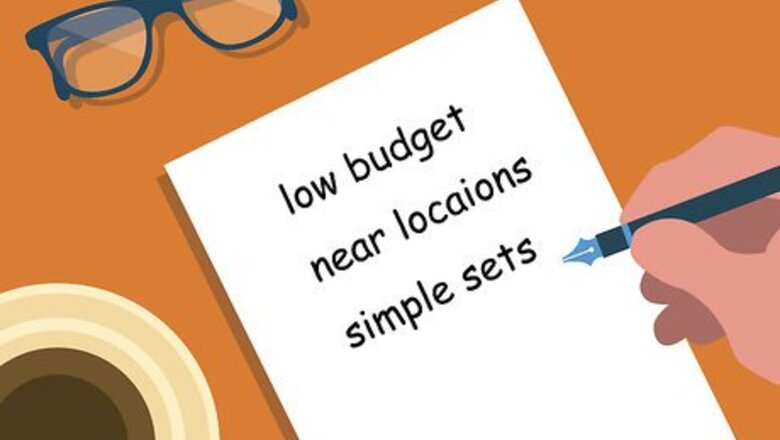
views
X
Expert Source
Melessa SargentProfessional Writer
Expert Interview. 14 August 2019.
Summarizing the Plot
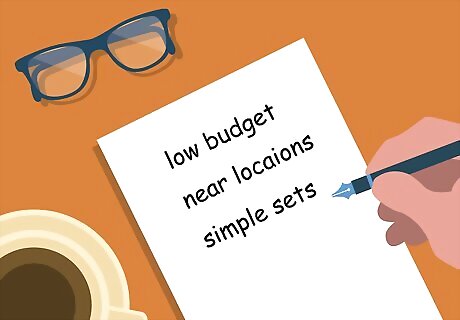
Write the logline. The logline is at most two sentences that sum up your screenplay. Include the identity of the protagonist (the main character/hero), the challenge(s) they’re trying to overcome, and why they must overcome them. If you can, follow the logline with a paragraph describing why your screenplay is attractive from a filmmaker's point of view. For example, if it can be shot on a small budget using a limited number of locations near Los Angeles, your movie might be more attractive than one that will require a distant location, elaborate sets, or a lot of special effects.

Introduce the main characters and setting. Limit this part to one paragraph. Include the names (who), their occupations (what), where they live and work (where), the time period of the story (when), and the reason you’re telling their story (why). Type the names of the characters in all capital letters the first time their names appear. After that, type the character names in the usual way. Characters that should be included in the synopsis are the protagonist, the antagonist (villain), the love interest, and any important allies of the protagonist. Leave out the names of lesser characters.
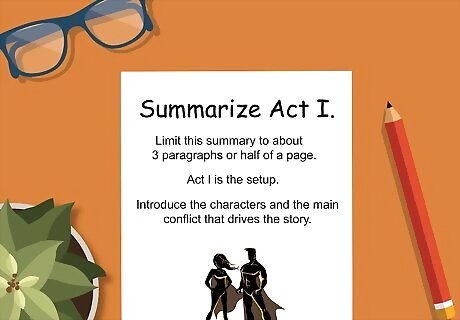
Summarize Act I. Limit this summary to about 3 paragraphs or half of a page. Act I is the setup. Introduce the characters and the main conflict that drives the story.

Cover Act II. Dedicate about a page to Act II. Show all the conflicts your characters face. Show how these conflicts lead to the crisis, or the characters’ reversal of fortune.
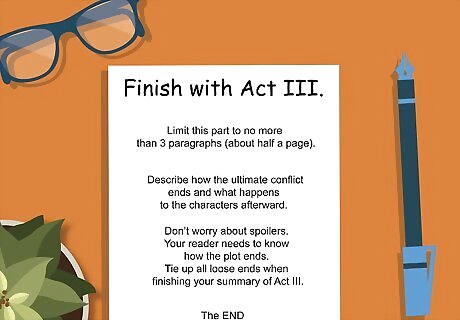
Finish with Act III. Limit this part to no more than 3 paragraphs (about half a page). Describe how the ultimate conflict ends and what happens to the characters afterward. Don’t worry about spoilers. Your reader needs to know how the plot ends. Tie up all loose ends when finishing your summary of Act III.

Think of a title that fits your story. You can try to make the title catchy and interesting, but the director of the movie studio will probably change it, so don't work on it too hard. Put the title at the top of the page.
Following Basic Guidelines
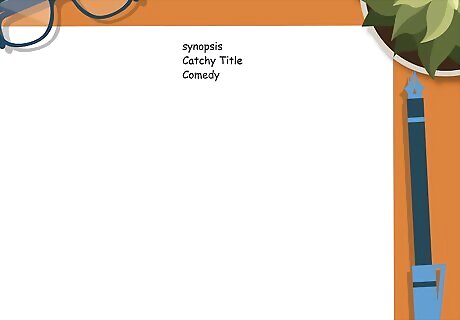
Designate it a synopsis. This might seem obvious, but it’s easy to overlook. In the header of your document, write out the word “Synopsis” and the title of your movie. Under the title, inform your reader of the genre of you screenplay (drama, horror, comedy, etc.). For example, a synopsis for Star Wars might include “A science fiction adventure” beneath the title.

Add your contact information. At the top of the first page beneath the header, enter your name, mailing address, phone number, and email address. Include your Writers Guild of America (WGA) registration number. Always register your completed screenplay and/or treatment with the WGA to establish your authorship
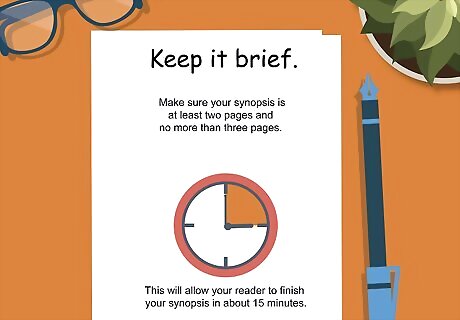
Keep it brief. Make sure your synopsis is at least two pages. A one-page synopsis might seem less time-consuming, but your reader will see it as lacking the necessary details. At the same time, keep it at no more than three pages. This will allow your reader to finish your synopsis in about 15 minutes.

Write in the present tense. Even if your plot is set in the past or the future, use present tense verbs. For example, in a screenplay for Star Wars, you might write “Obi-Wan Kenobi fights Darth Vader.” This is because the action in your screenplay happens as you write it, not in the time period you set it in.

Use third-person point of view. Even if you have a narrator doing voiceovers in the screenplay, the camera always takes an all-seeing viewpoint. Use pronouns like “he,” “she,” and “they.” For example, you would say, “When Little Teapot gets all steamed up, he shouts to tip him over and pour him out.”
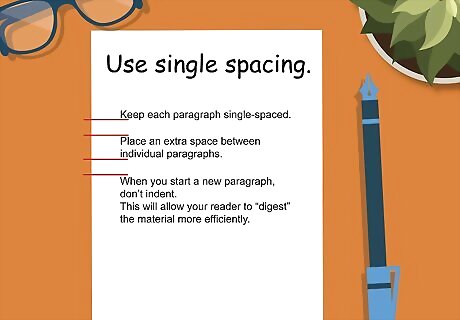
Use single spacing. Keep each paragraph single-spaced. Place an extra space between individual paragraphs. When you start a new paragraph, don’t indent. This will allow your reader to “digest” the material more efficiently.
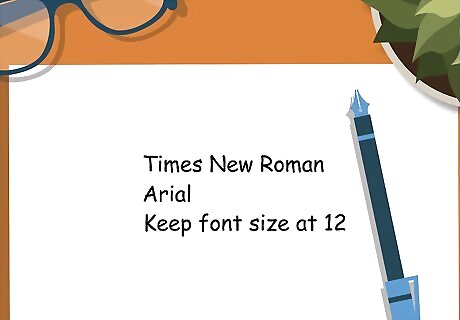
Stick to a standardized typeface and font. If your reader can’t read what’s on the page, your synopsis will end up in the recycling bin. For this reason, you should avoid script- or handwriting-style typefaces. Stick to defaults like Times New Roman or Arial. Keep your font size at 12, unless the submission guidelines specify something different.
Getting Your Point Across
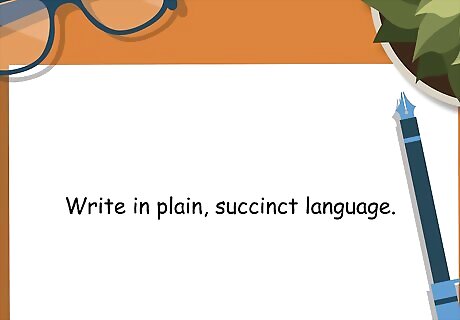
Avoid extravagant language. Write in plain, succinct language that any audience can understand. In order to sell your screenplay, your reader must first understand what your plot is about. If you use jargon or flowery language, your reader probably won’t bother going past the first few paragraphs. If you pad your synopsis with unnecessary adjectives or adverbs, it’s no longer a synopsis. Stay brief, and you’ll be one step closer to your goal.

Give your synopsis to other people to proofread. Ask them to look for errors in spelling, grammar, and any information that isn’t clear to them. This could be a friend, family member, or colleague. If they have any questions or if something isn't clear to them, change your synopsis to make the story clearer. If your reader finds something in your synopsis that’s unclear or confusing, they won’t request your full screenplay.
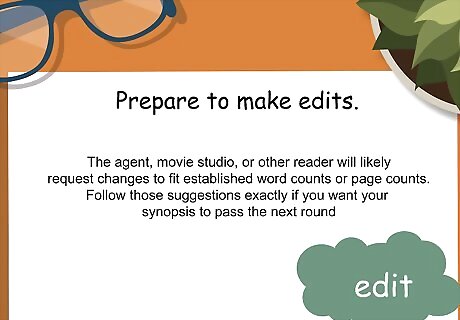
Prepare to make edits. Many organizations you may submit your synopsis to publish submission guidelines. Change your synopsis, if necessary, to fit those guidelines. The agent, movie studio, or other reader will likely request changes to fit established word counts or page counts. Follow those suggestions exactly if you want your synopsis to pass the next round.










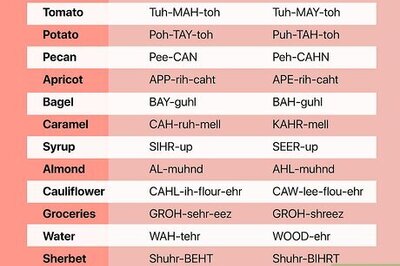



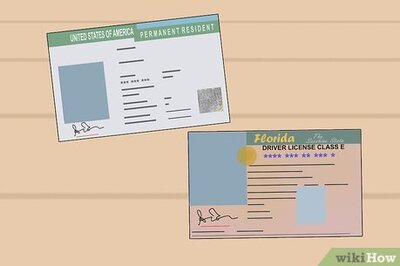

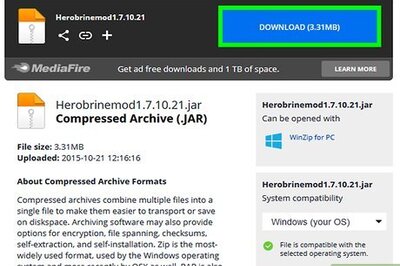

Comments
0 comment